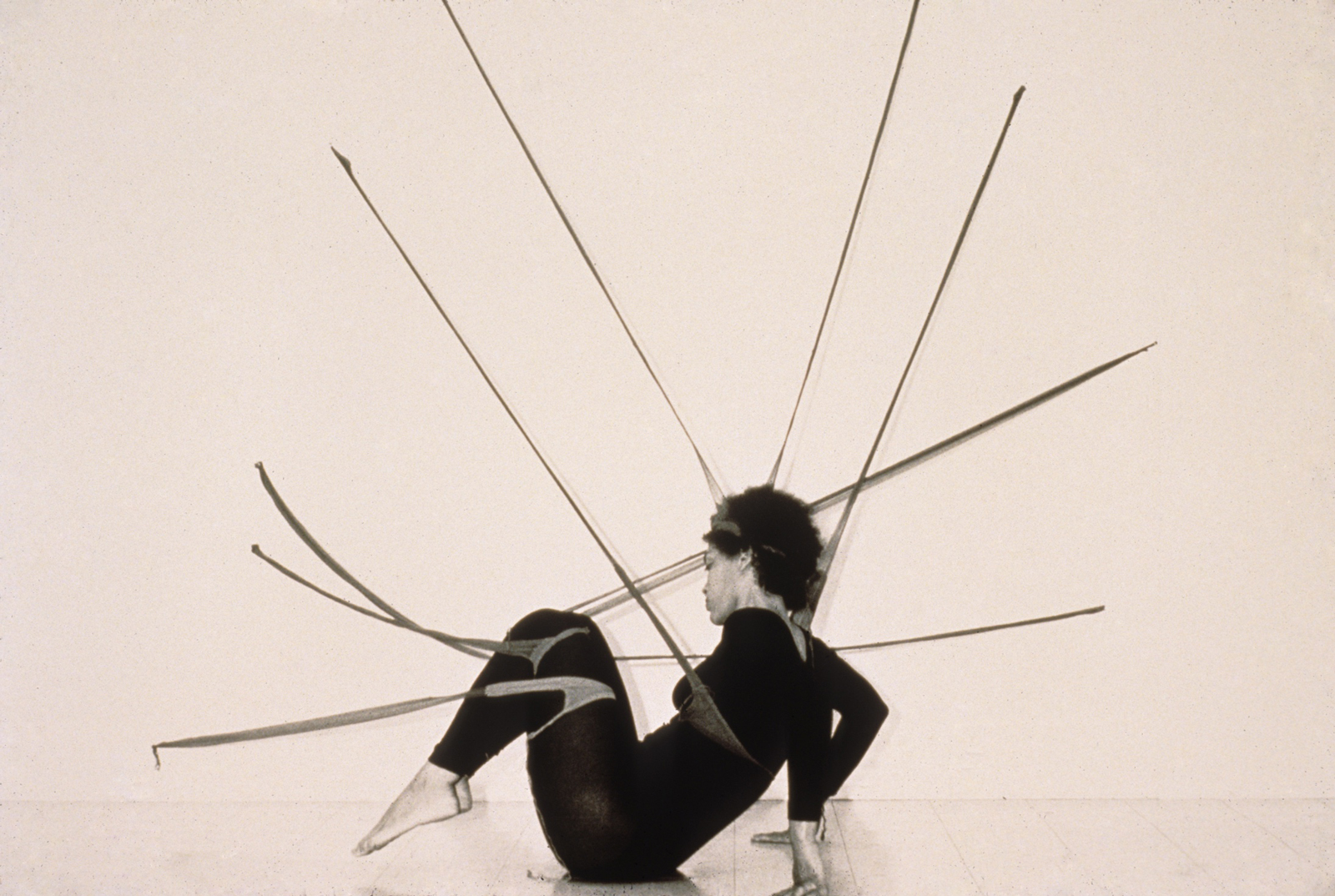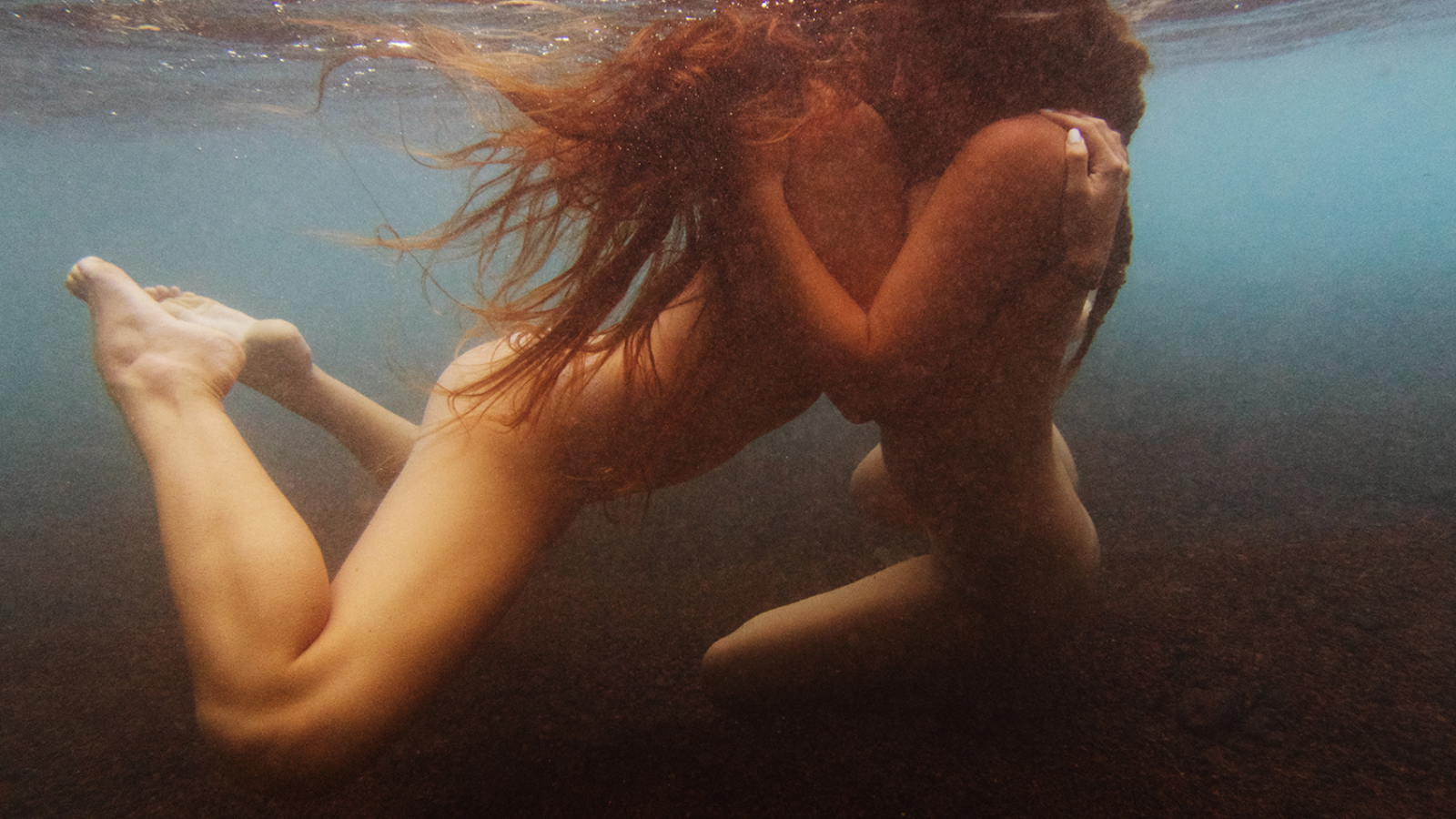Text: Monica Uszerowicz
Photos Courtesy of Giovanni Beltran
To momentarily break the fourth wall and speak with a full disclaimer: design, particularly object and furniture design, is a world I understand only at its basest level. Faced with a minimalist structure, I am fully aware there’s a complexity contained therein to which I’ll never be privy. My naivety might render me the best or worst consumer of the craft.
There was immediately a soft space in my heart, then, for Primitive Hut, presented by Giovanni Beltran[1] at Versace Versace Versace[2]. Giovanni Beltran is the gallery’s design agency, interested in both design and architecture. Based on Vitruvius’ De architectura (Ten Books on Architecture), Primitive Hut explores the architect’s theory on the basic elements of design. According to Marc-Antoine Laugier, an 18th century Jesuit priest and architectural theorist who outlined the concept in Essai sur l’Architecture, the theory argues that most forms of architecture derive from three primitive elements—a pediment, an entablature, and the column–intended to shelter man from sun and rain. An illustration by Charles Eisen was the book’s frontispiece; it features a cherubic child and a woman pointing to a hut of trees.
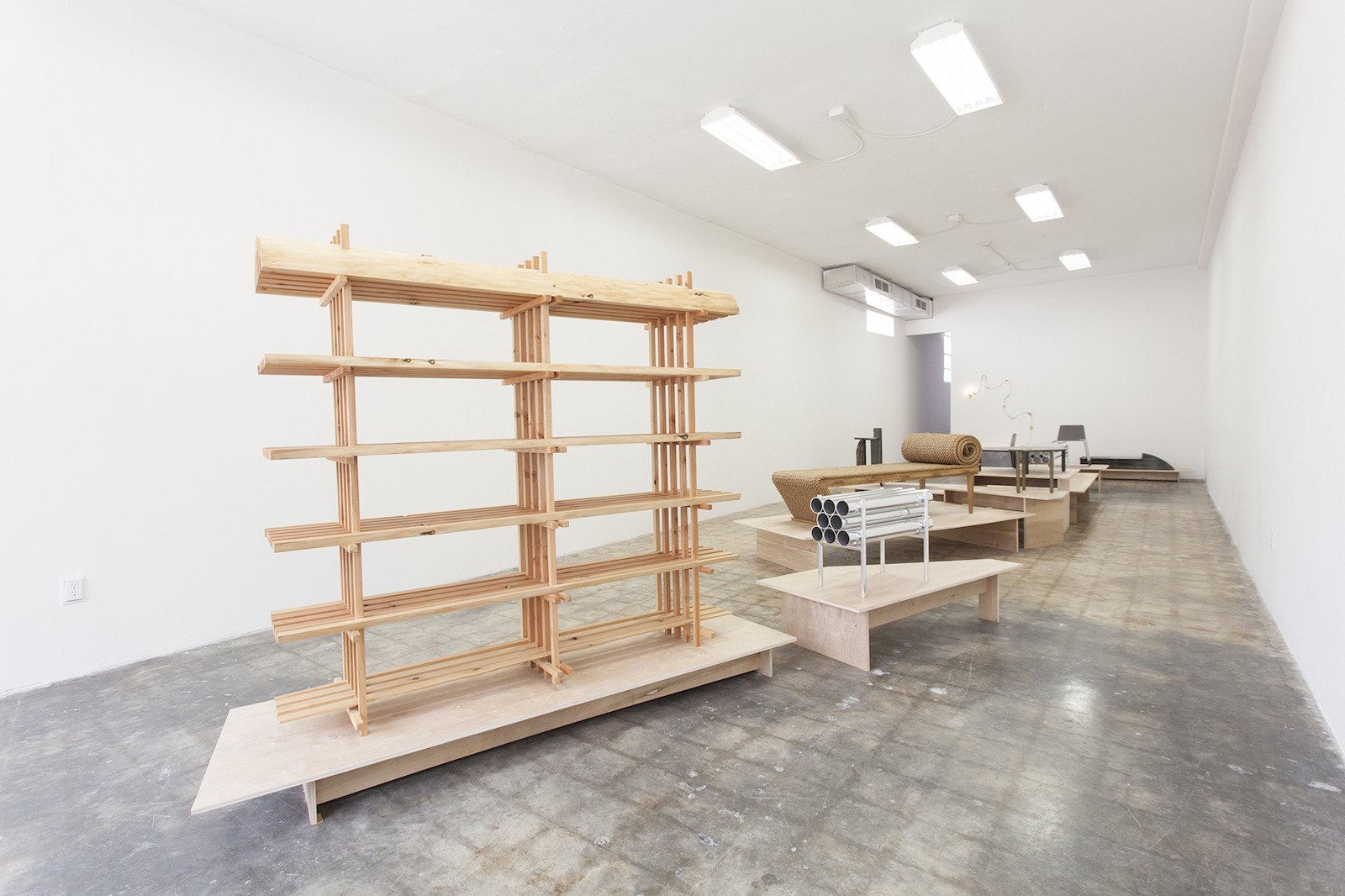
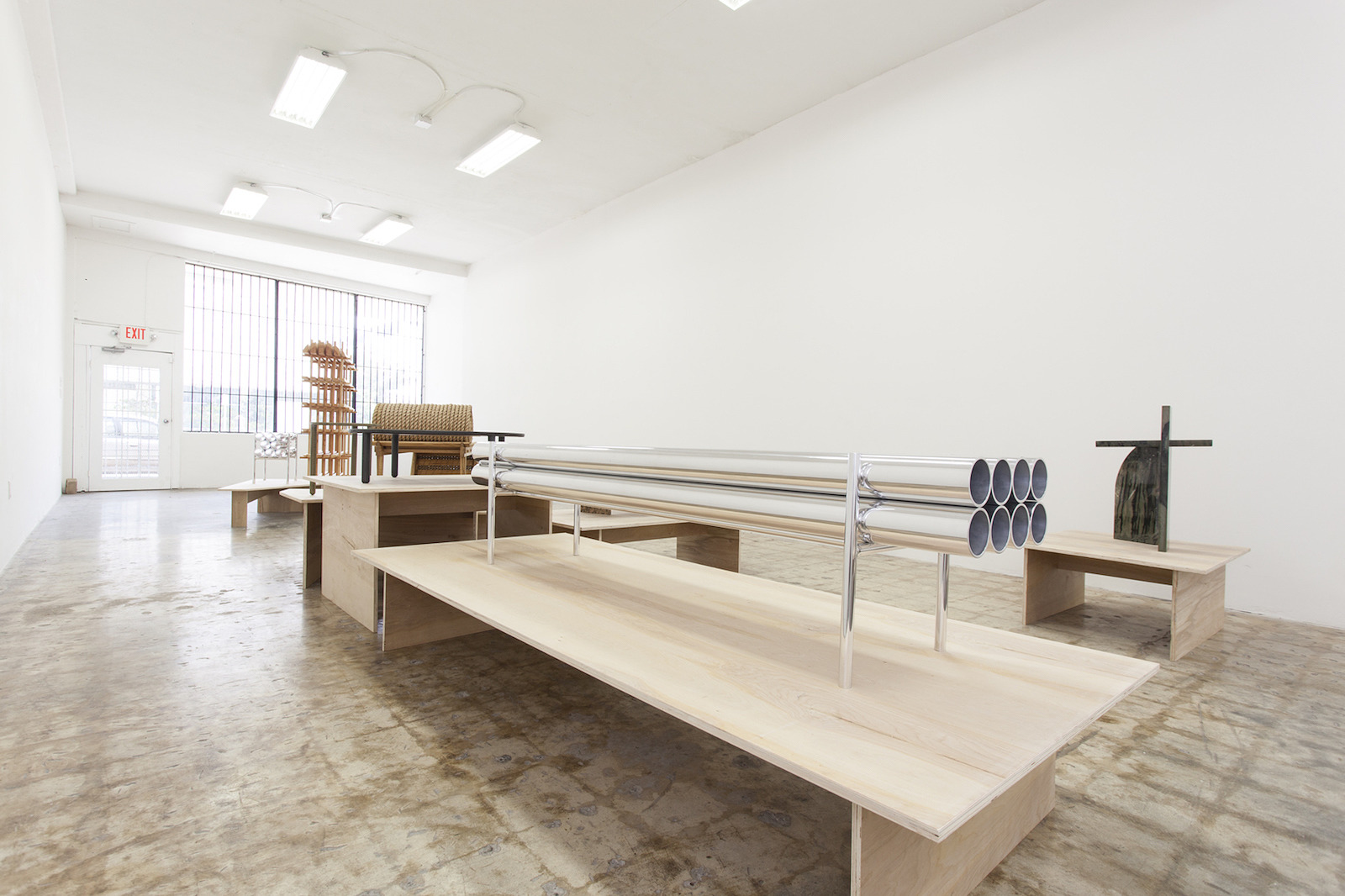
The cover of the journal accompanying Primitive Hut is emblazoned with the same image, and the images and essays inside address the nature of materials and their significance. The exhibition features objects by seven designers, all of whom were approached to work with one specific material, allowing the element itself to dictate the design’s form and the resulting nature of the object. (As the show’s press release describes it: “Primitive Hut looks to examine making through elemental beginnings.”)
Each piece is displayed on a wooden plinth that, if placed flush with the others, would create a Pangeaic shape—a super-plinth. Elevation lends objects a worth that demands a specifically intimate kind of examination—it’s worth thinking about how height and placement might guide interpretation of form, too. Deon Rubi worked with aluminum, constructing benches that look an awful lot like stacks of materials at a construction site: ovular aluminum tubes on their side, atop each other in a mostly-clean line. The tubes are squeezed right into their compartments, not welded together but supported by the weight of each other, and the finish is especially shiny. The benches are special indicators of what happens when an object is guided only by its material but still functions in a luxury market: taken down to its roots, even resembling the trappings of an entirely different realm (the construction site), the piece remains aesthetically pleasing, even beautiful.
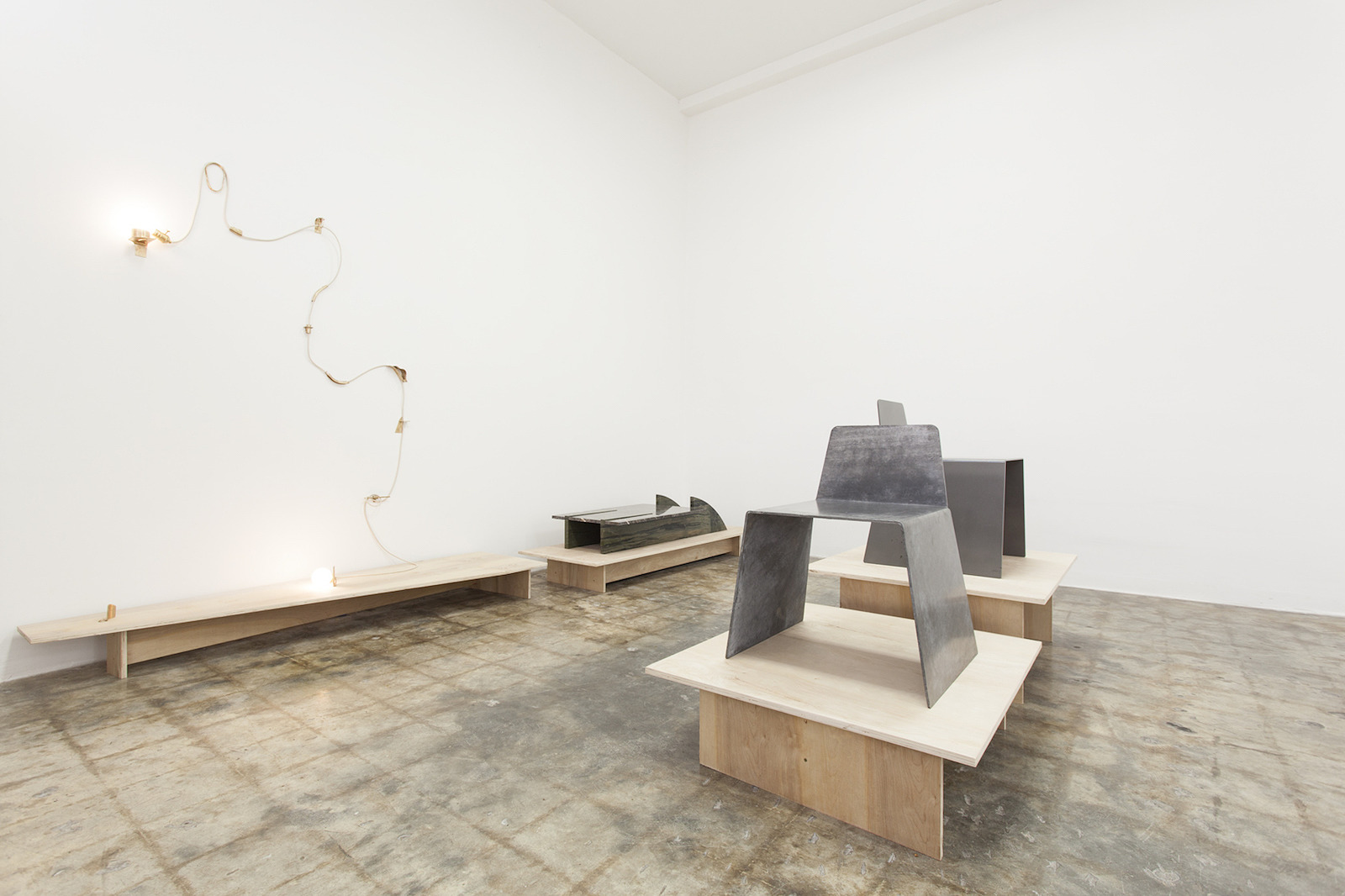
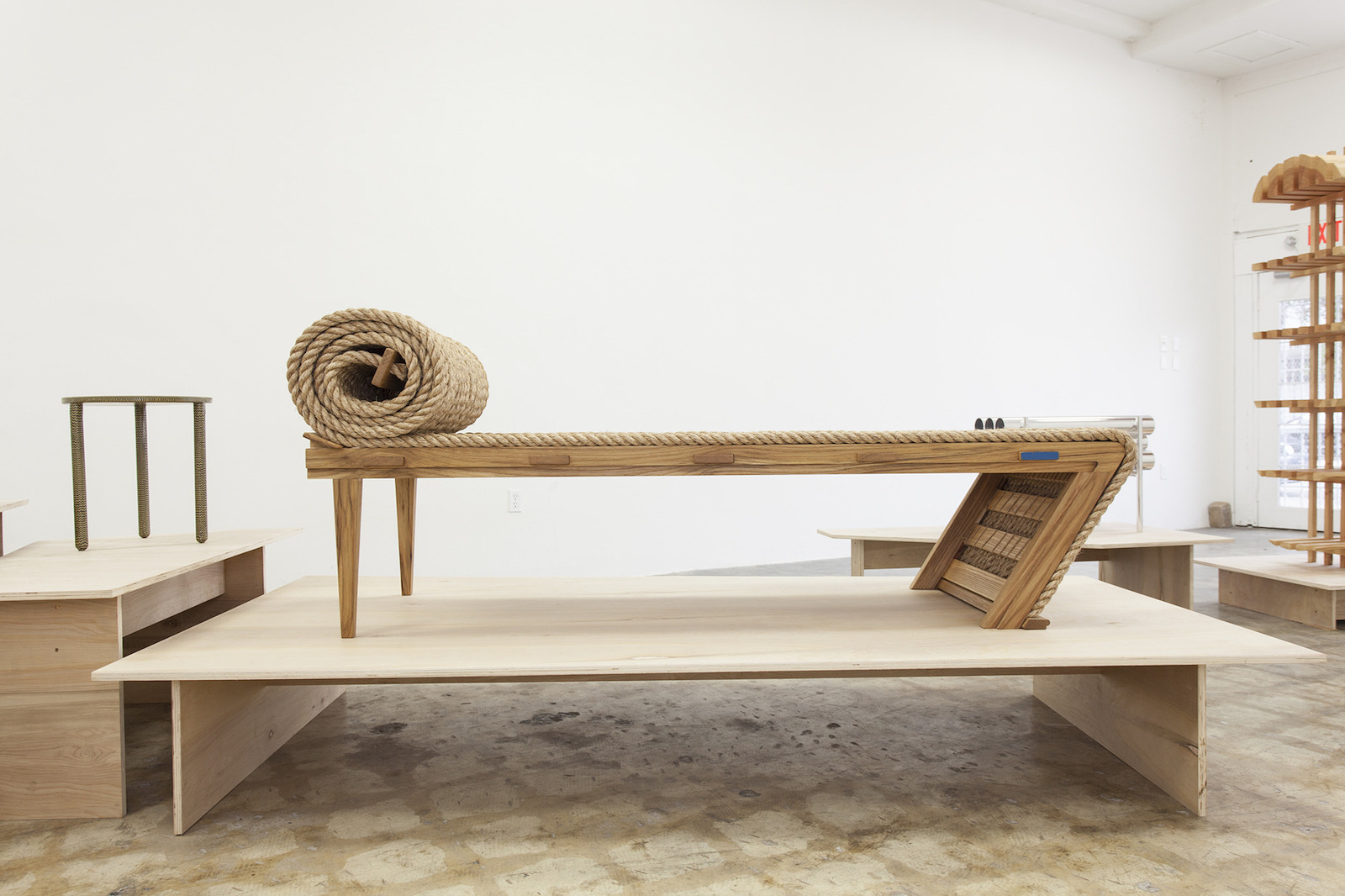
Jonathan Nesci’s chairs function similarly: they’re clean, pared-down, singular lines of steel, cut and bent three times to give them their shape. One is dipped in zinc; the other, sandblasted. They are simple and accidentally luxe and it doesn’t matter if they are comfortable or not. It’s an equally apt description for Brian Booth’s chaise lounge constructed of manila cord and wood—with rope as his material, he let the base come to life through the natural shape of the rope (it almost seems to drape atop the wood).
Some items are less austere. The stone tables by Jessica Martin (who frequently collaborates with Deon Rubi as NUN), constructed with granite and marble slabs, draw their inspiration from Kiyosi Seike’s The Art of Japanese Joinery. In her half-moon-shaped table, the pieces interlock in such a way that only a small few are required to keep it upright; the slabs communicate, facing away from each other, as if they were dancing. Gabrielle Baez, a jewelry designer, utilizes bronze to create sconces not unlike her smaller, bespoke items. They’re hefty treasures, displayed here holding up a long cord with bulbs at either end, guiding its trajectory. In presenting design as a thing that can even have a primitive foundation (and indeed it can), Primitive Hut gives reverence to elemental materials—that which helped start it all, even the cosmos themselves.
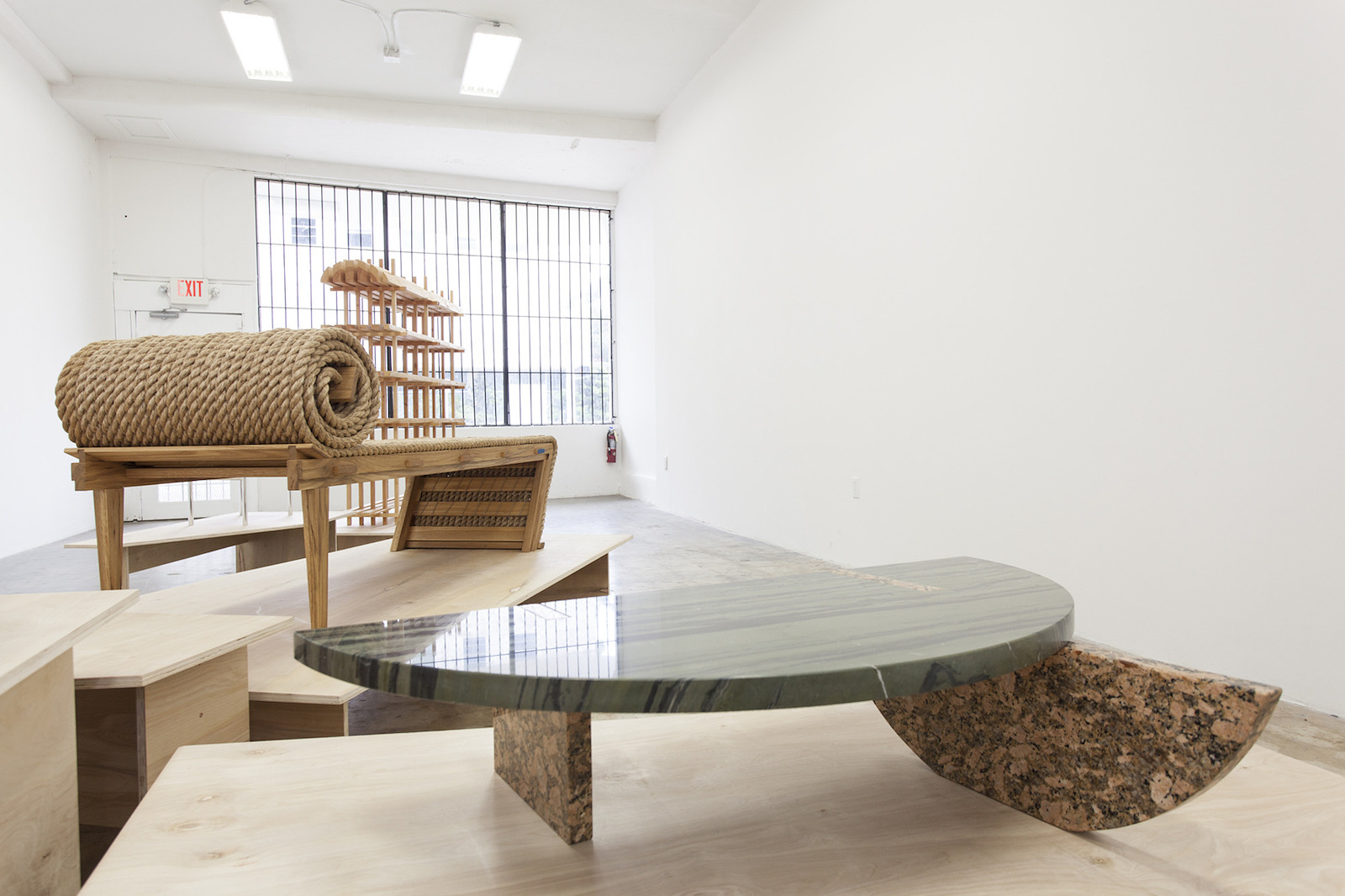
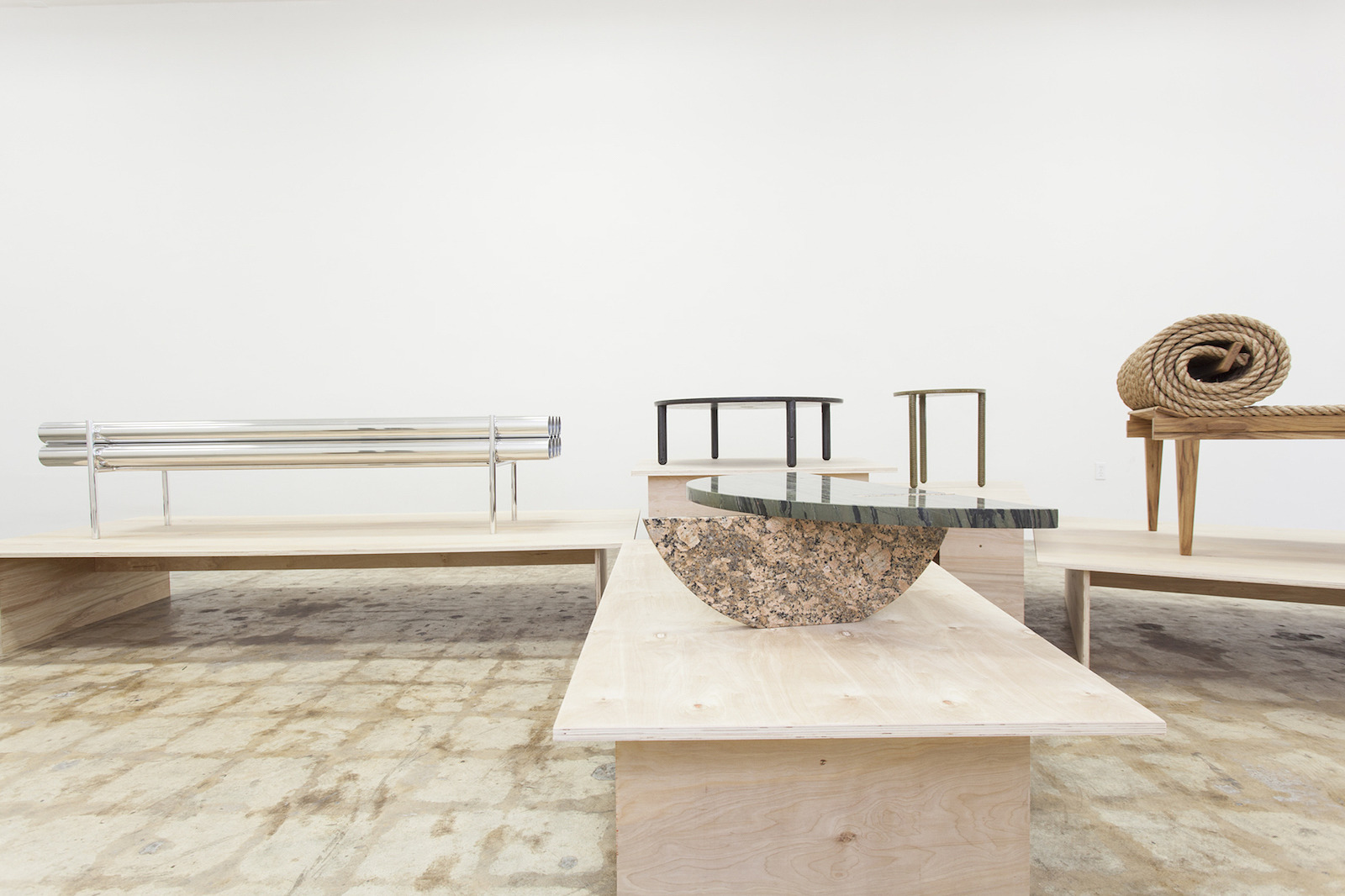
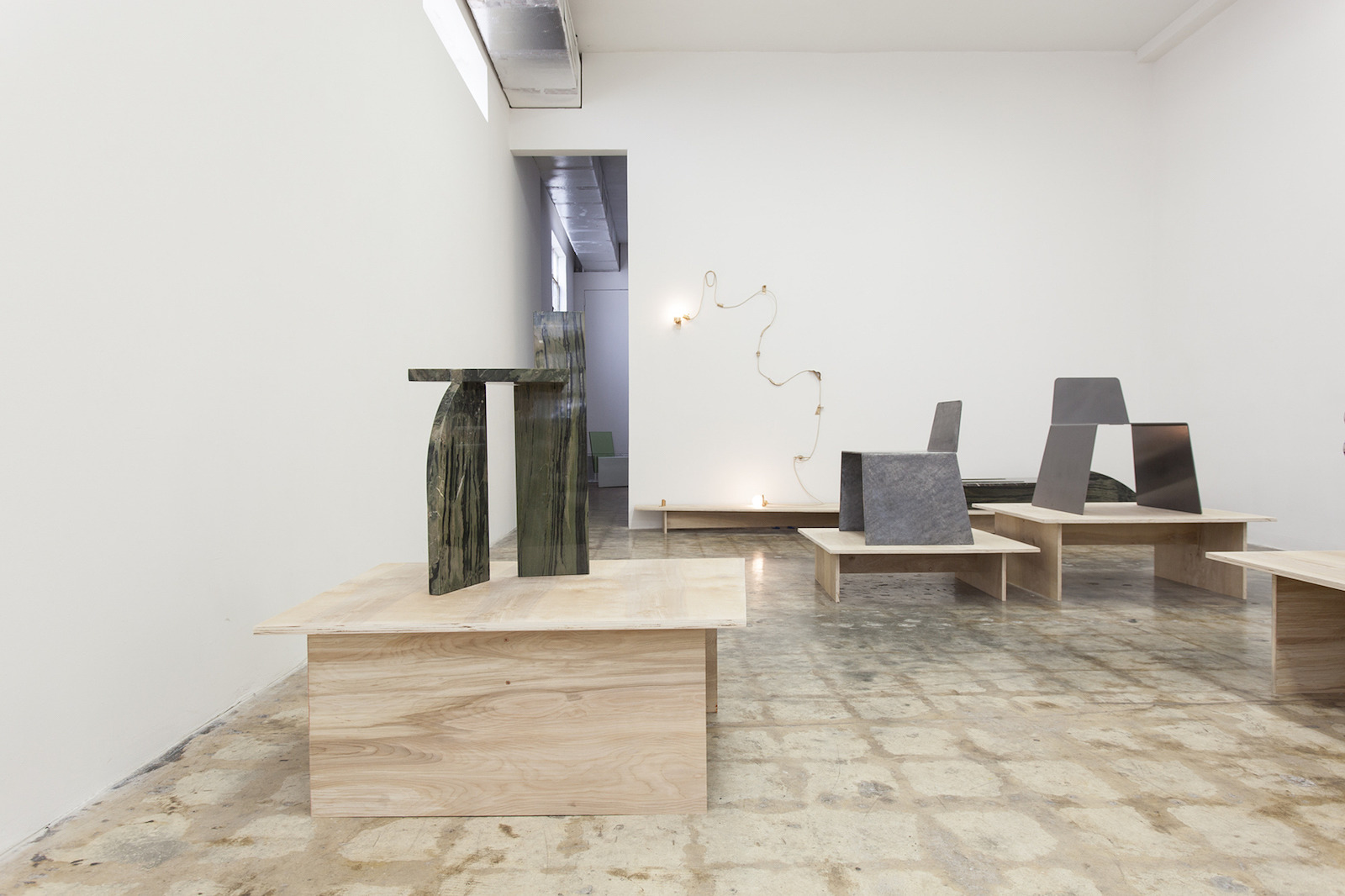
[1] It sort of sounds like “Guccivuitton,” if you say it fast.
[2] Formerly Guccivuitton.
Primitive Hut, featuring the work of Gabrielle Baez, Brian Booth, Jessica Martin, Jonathan Muecke, Jonathan Nesci, Lex Pott, and Deon Rubi, is presented by Giovanni Beltran. It’s on view at Versace Versace Versace in Miami through June 25, 2016.
